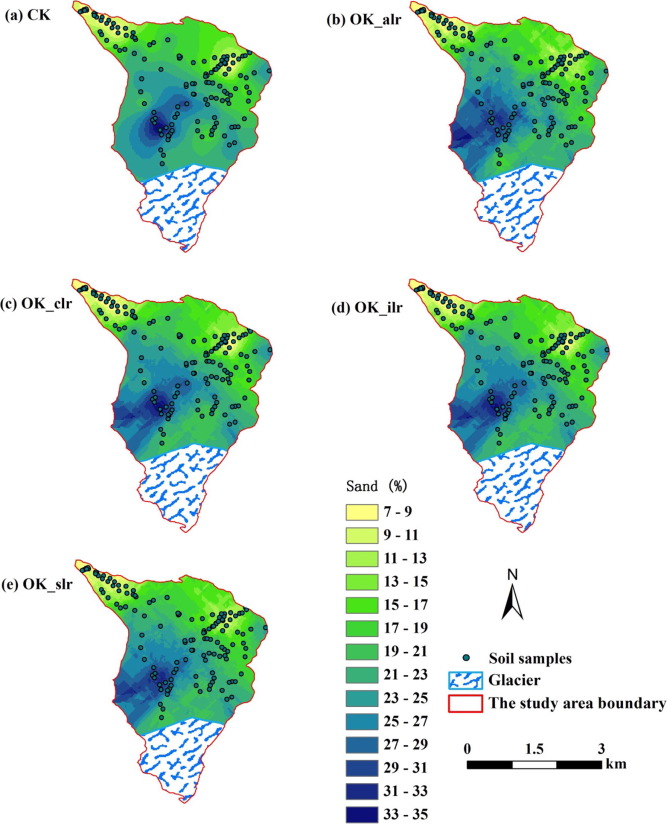
Soil particle-size fractions (psf) as basic physical variables need to be accurately predicted for regional hydrological, ecological, geological, agricultural and environmental studies frequently. Considering the particularity of compositional data, the results of mapping the soil psf should satisfy all components simultaneously unbiasedness, non-negativity, constant sum, and minimizing the sum of prediction error variances. However, most of the traditional methods may not satisfy the special requirements of the soil compositional data interpolation.
Recently, associate Prof. SHI Wenjiao with the Institute of Geographic Sciences and Natural Resources Research (IGSNRR) of the Chinese Academy of Sciences and her collaborator WANG Zong (master degree candidate) selected Four log-ratio transformations, including additive log-ratio (alr), centered log-ratio (clr), isometric log-ratio (ilr), and symmetry log-ratio (slr), combined with ordinary kriging (log-ratio kriging: alr_OK, clr_OK, ilr_OK and slr_OK) to be compared with compositional kriging (CK) for the spatial prediction of soil psf in a typical area in the upper reaches of Heihe River, China.
Mean error (ME), Root mean squared error (RMSE), Aitchison’s distance (AD), standardized residual sum of squares (STRESS) and right ratio of the predicted soil texture types (RR) were chosen to evaluate the accuracy for different interpolators.
In addition, researchers also compared the interpolation accuracy of different methods related with different environmental factors.
The results showed that CK had a better accuracy than the four log-ratio kriging methods and presented reasonable and smooth transition on mapping soil psf according to the environmental factors (Fig.1).
"The study gives insights for mapping soil psf accurately by comparing different methods for compositional data interpolation,” said SHI. “Because of the spatial patterns of soil psf are always related to the spatial distributions of some environmental variables like terrain, land use types, vegetation types, ancillary data should be coupled with the interpolators for compositional data to improve the performance of the prediction in the future.”
Their research was published on the Journal of Hydrology entitled "Mapping soil particle-size fractions: A comparison of compositional kriging and log-ratio kriging".
 |
| Fig. 1 The interpolation maps of sand fractions by (a) CK, (b) OK_alr, (c) OK_clr, (d) OK_ilr and (e) OK_slr. (Image by SHI Wenjiao) |

86-10-68597521 (day)
86-10-68597289 (night)

86-10-68511095 (day)
86-10-68512458 (night)

cas_en@cas.cn

52 Sanlihe Rd., Xicheng District,
Beijing, China (100864)

